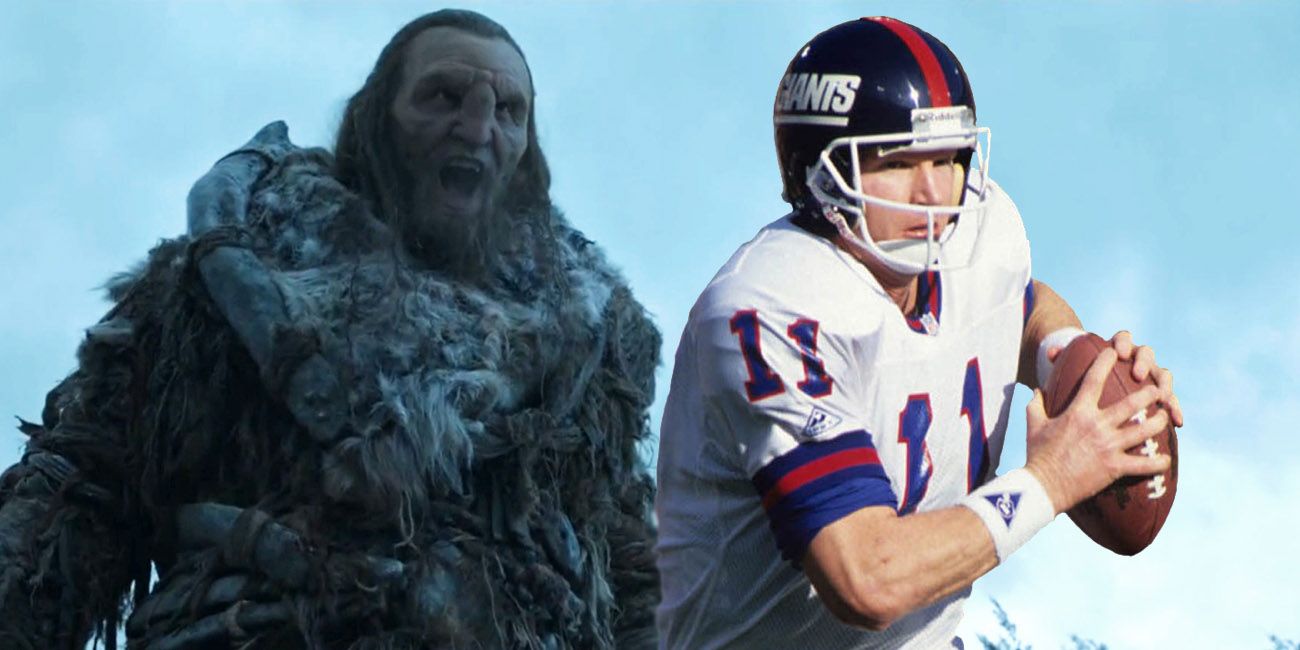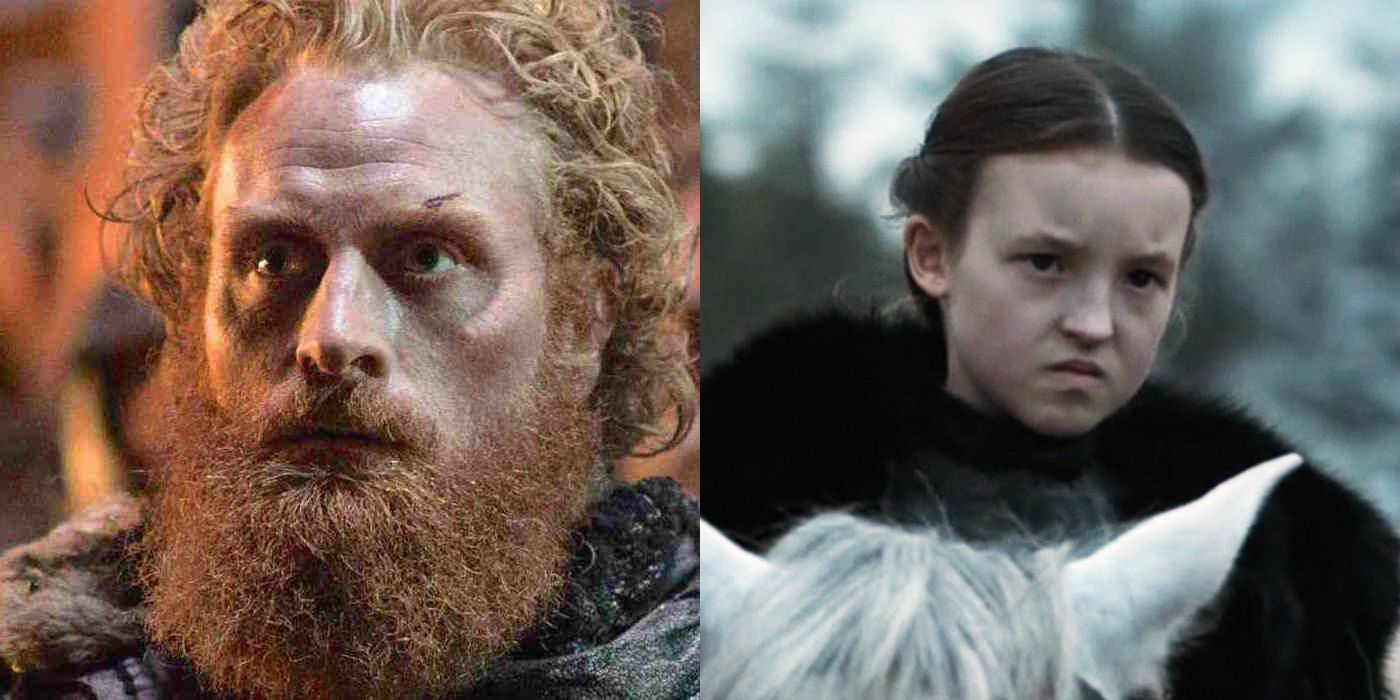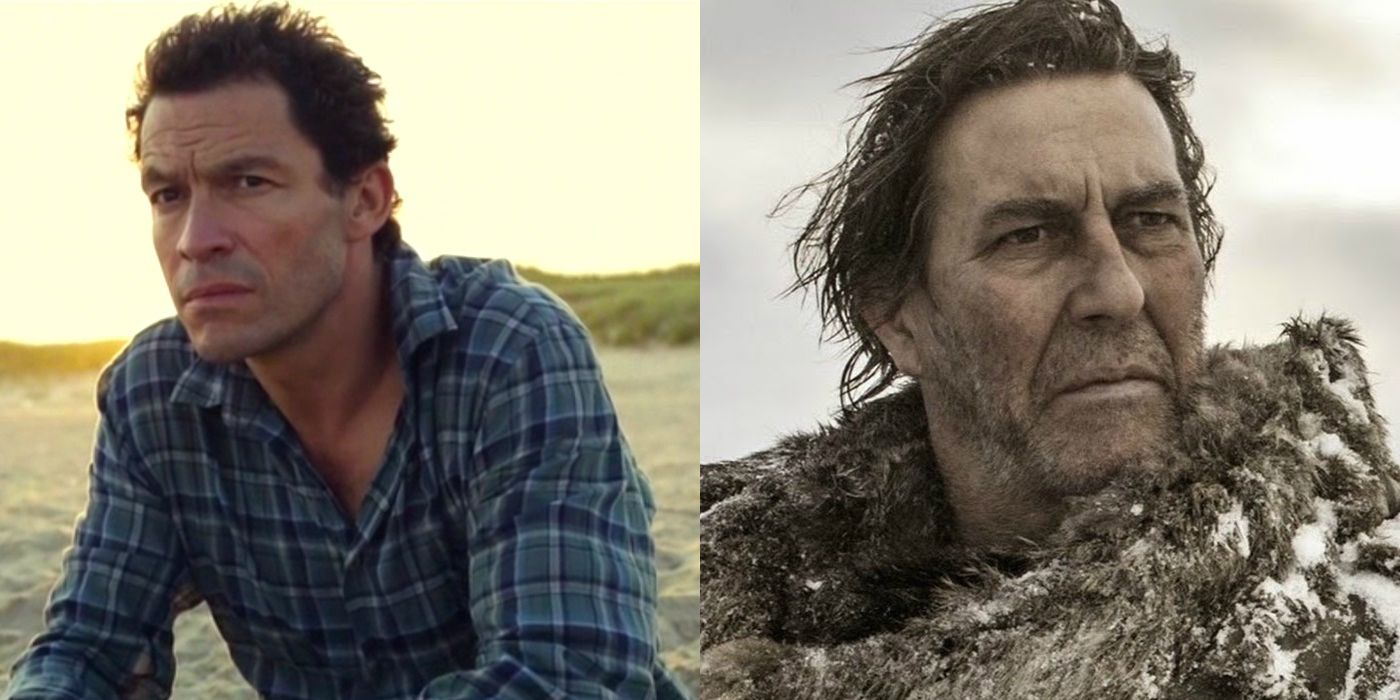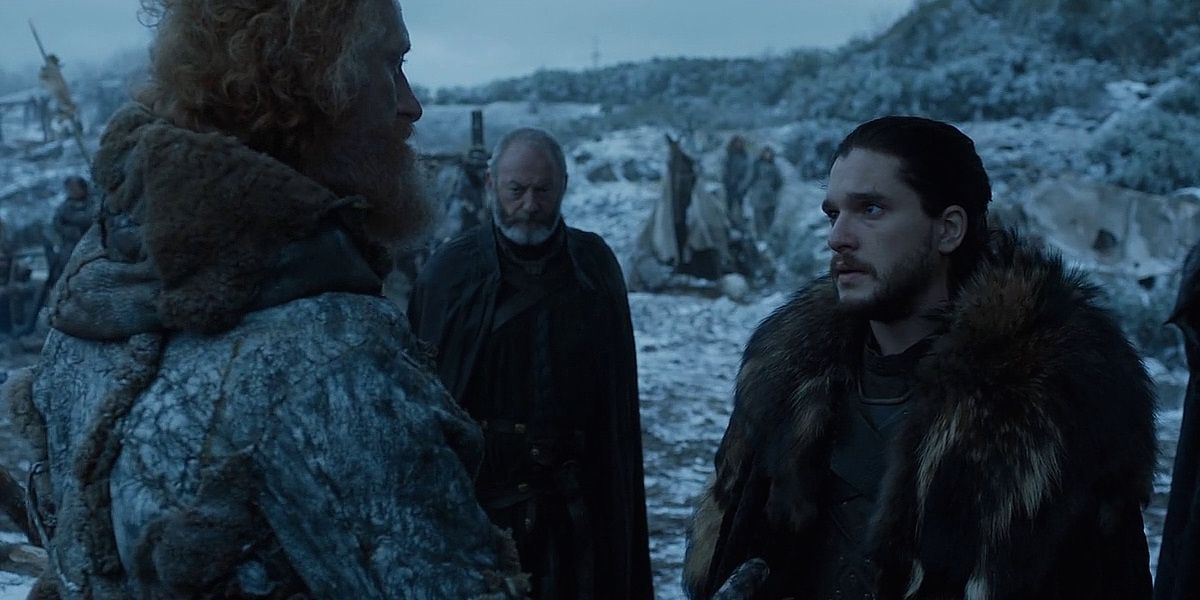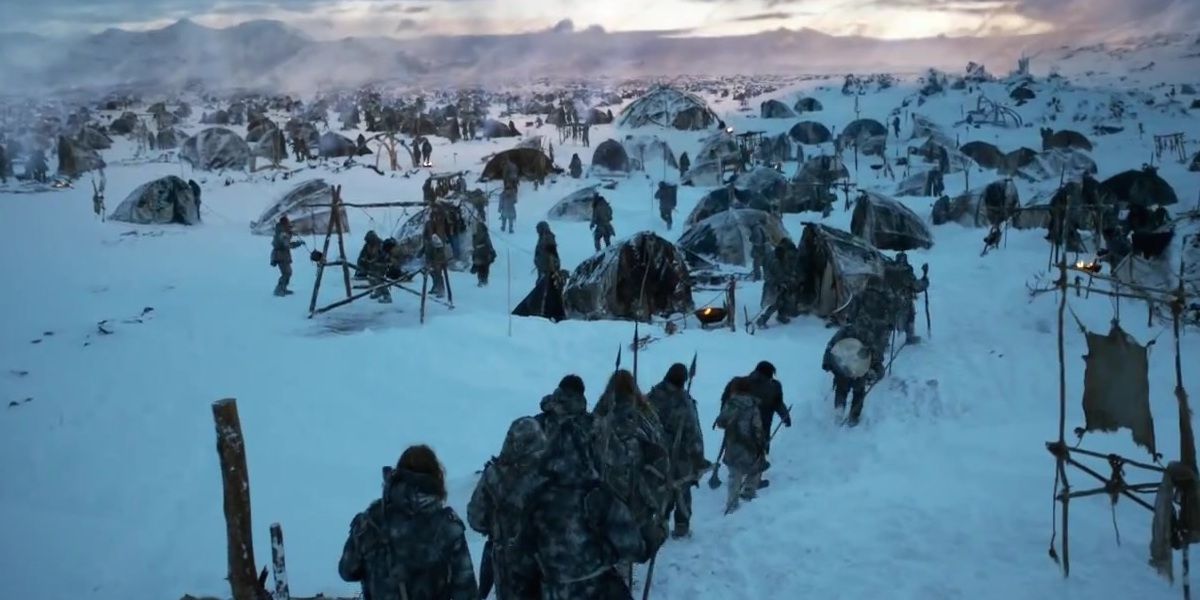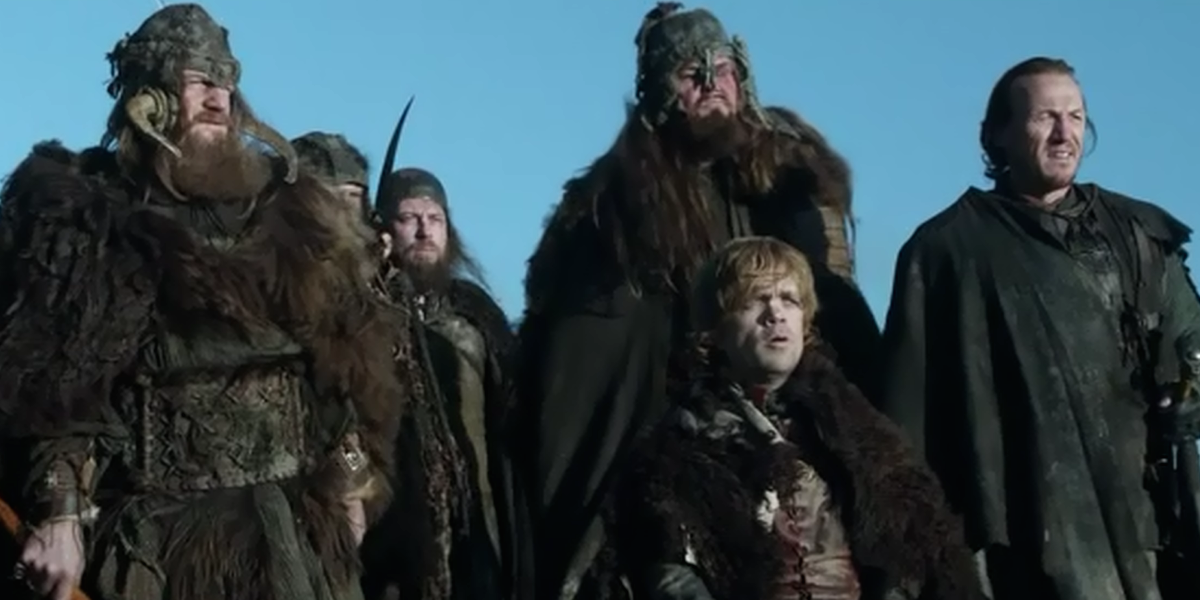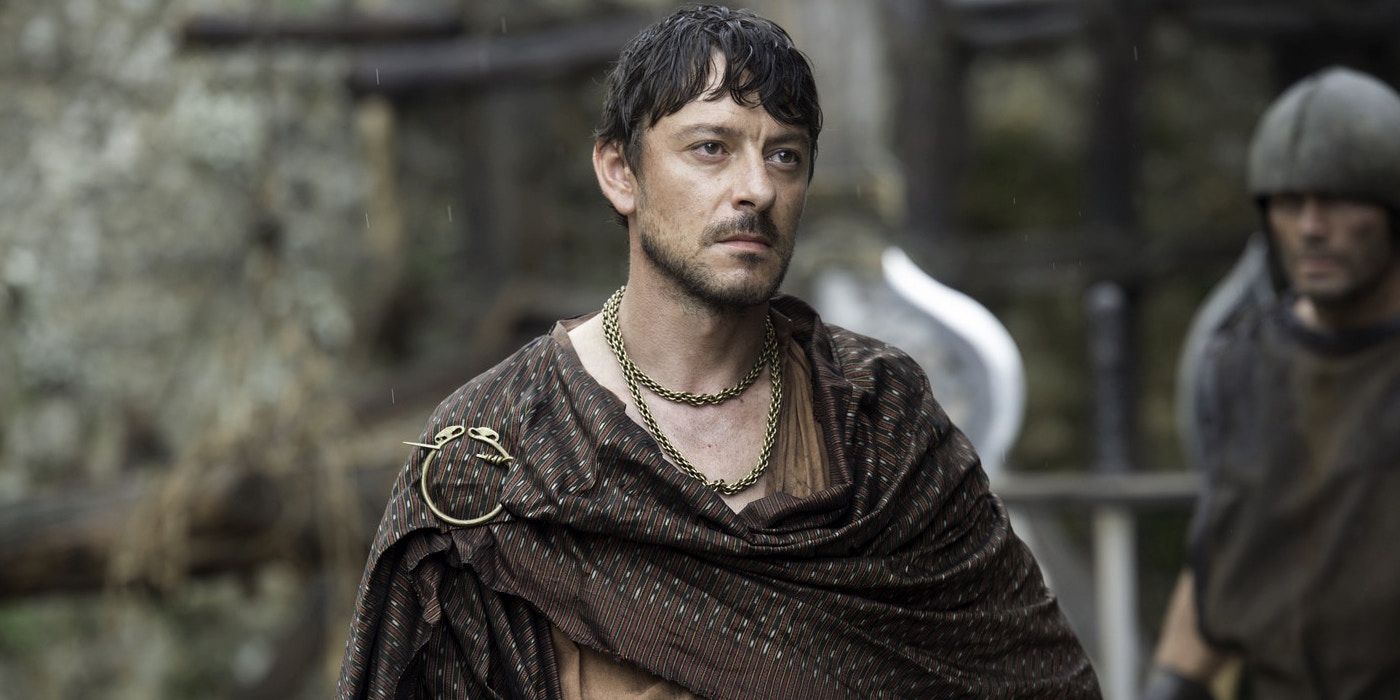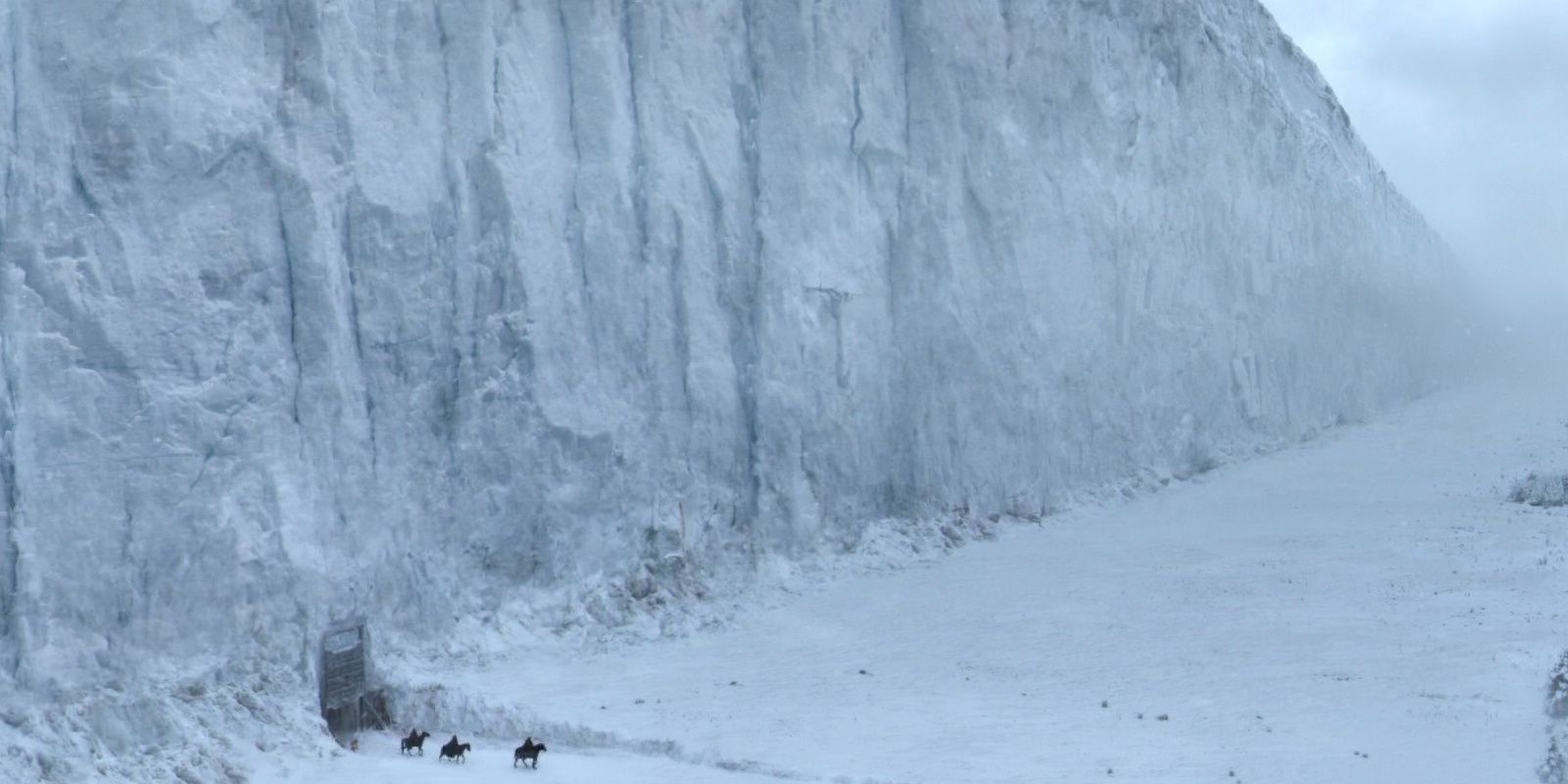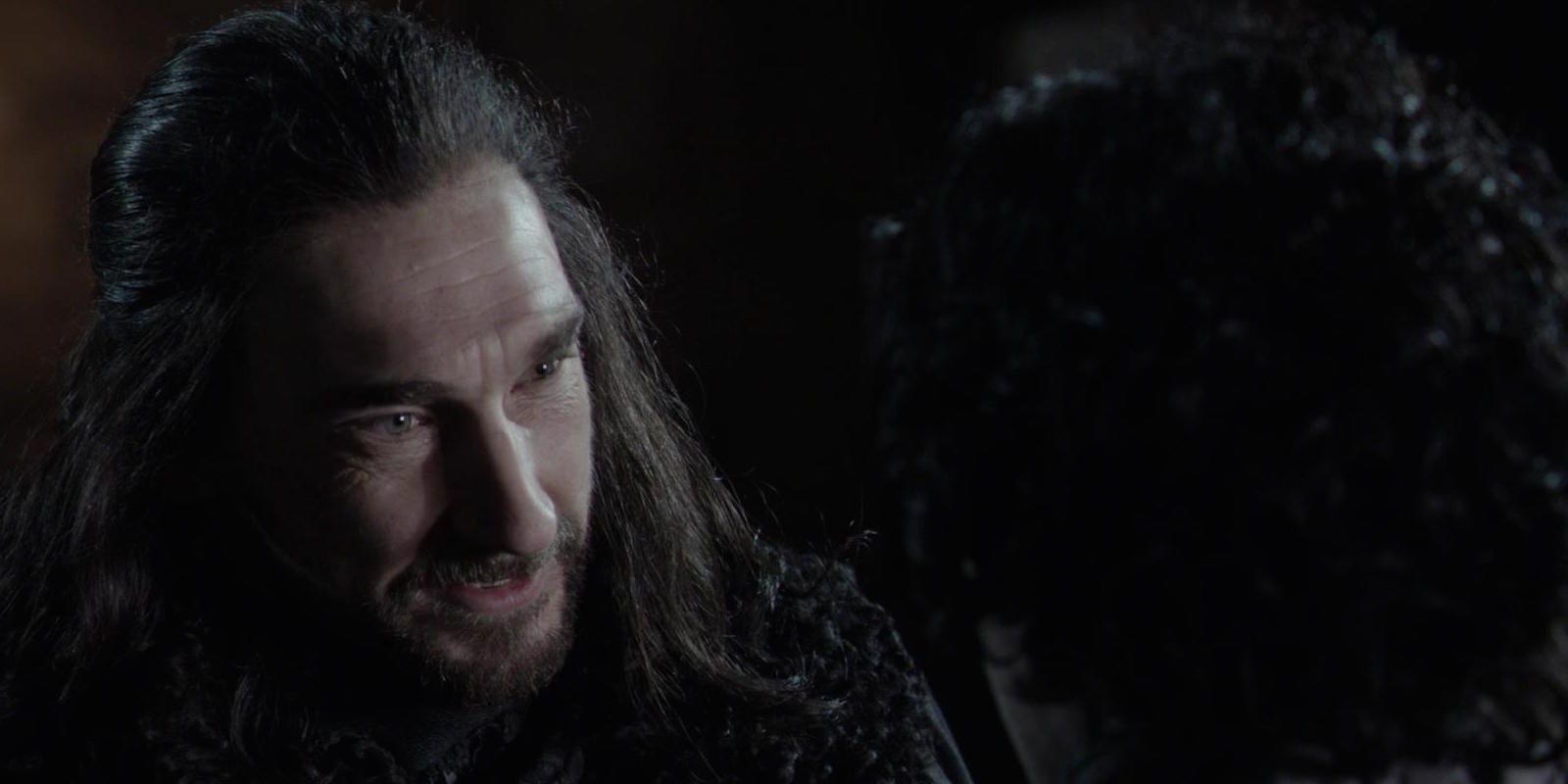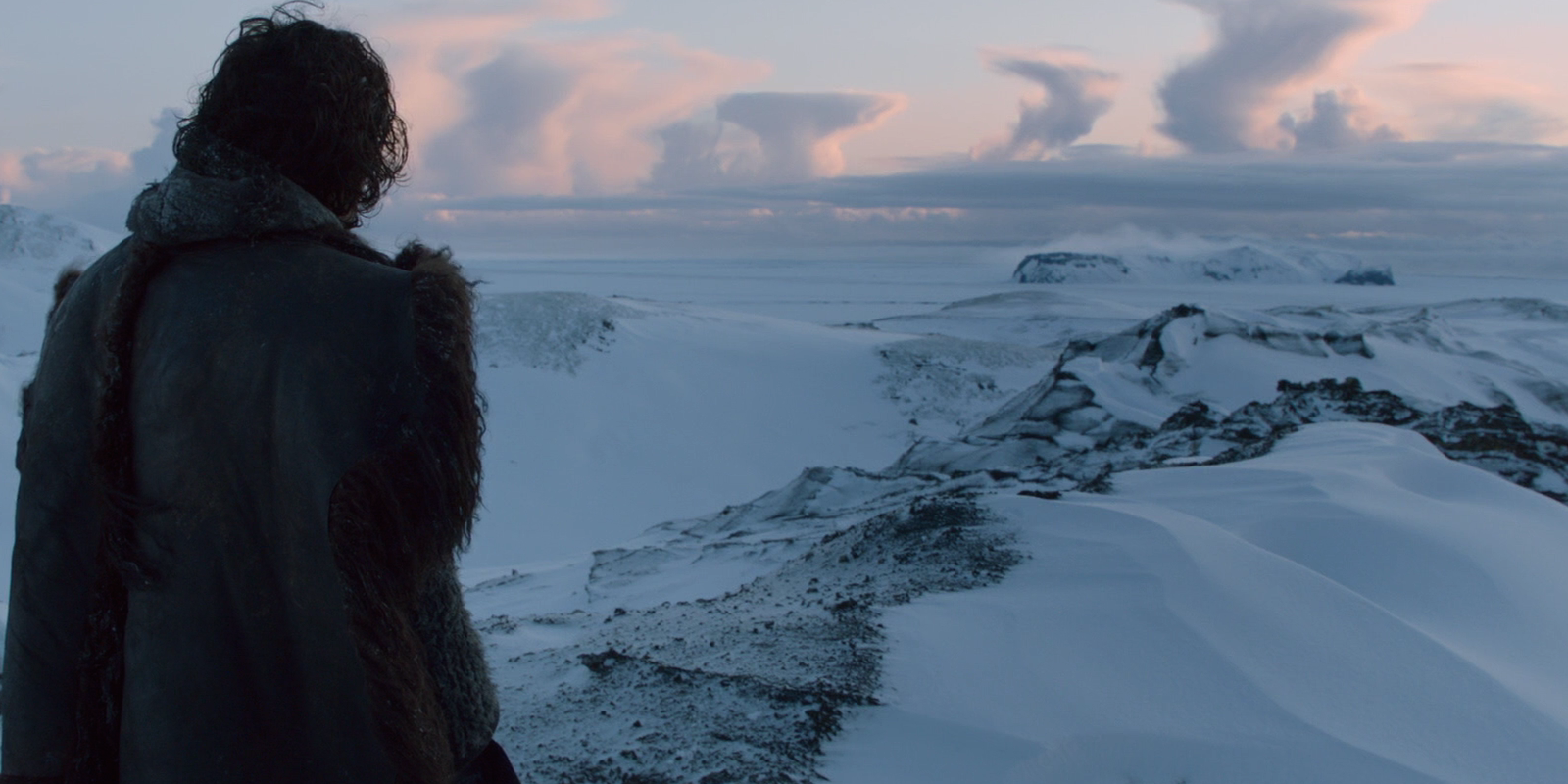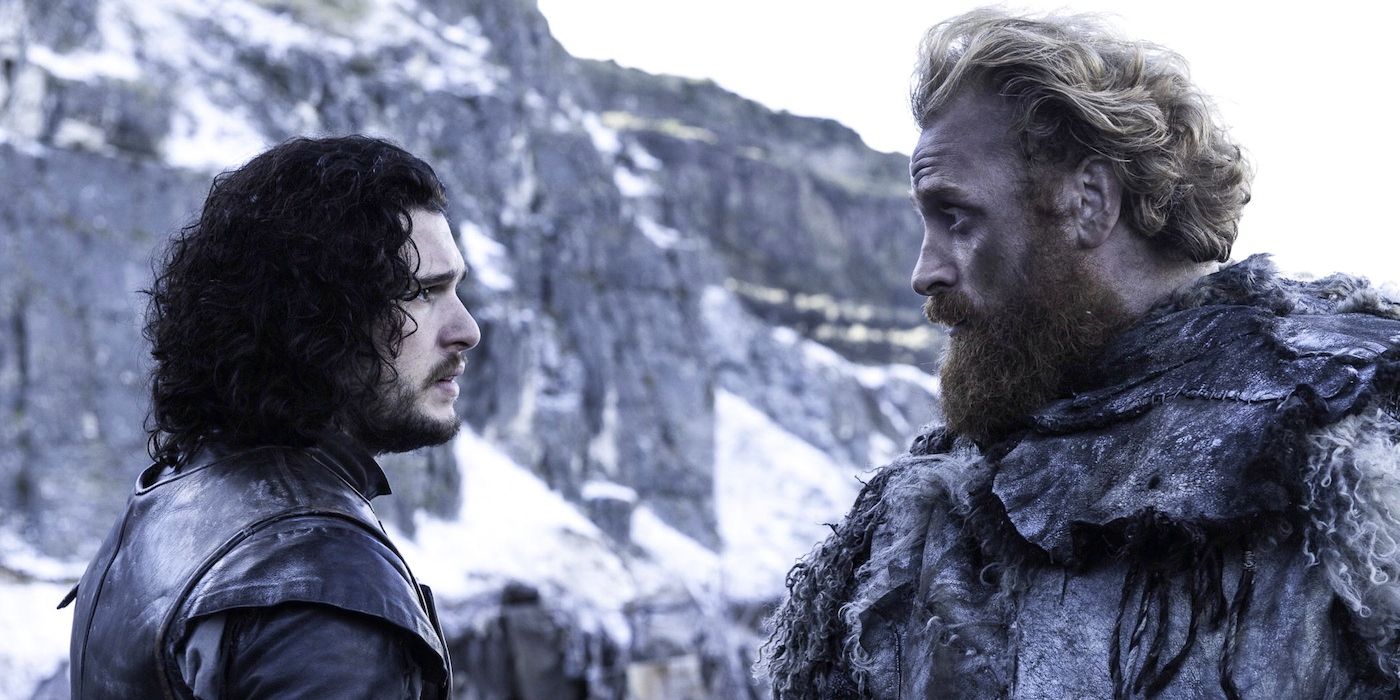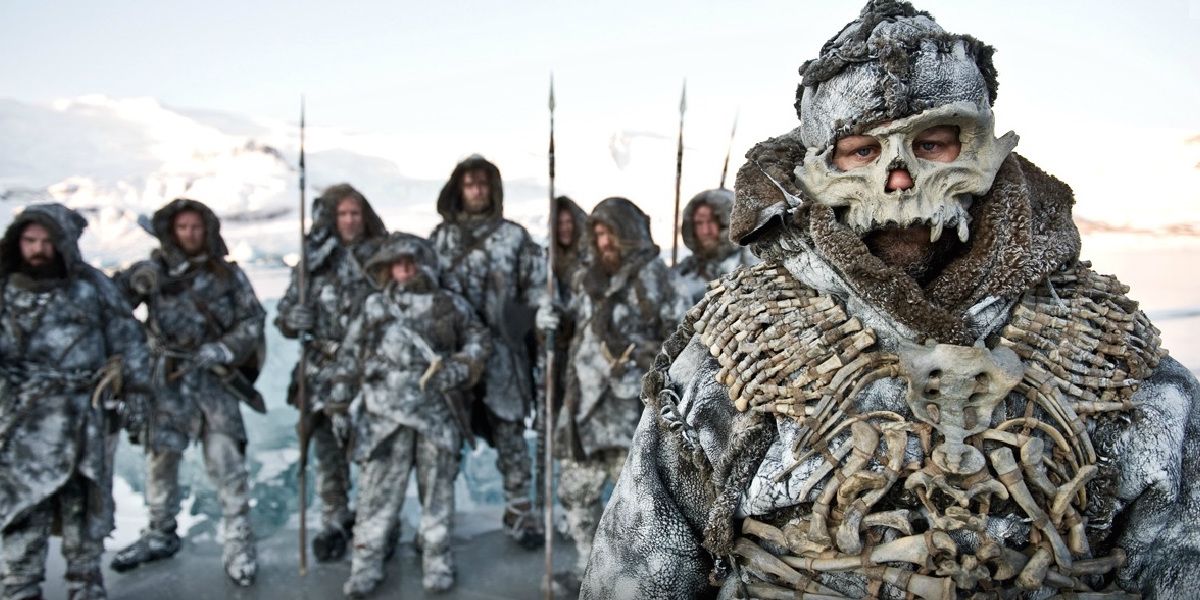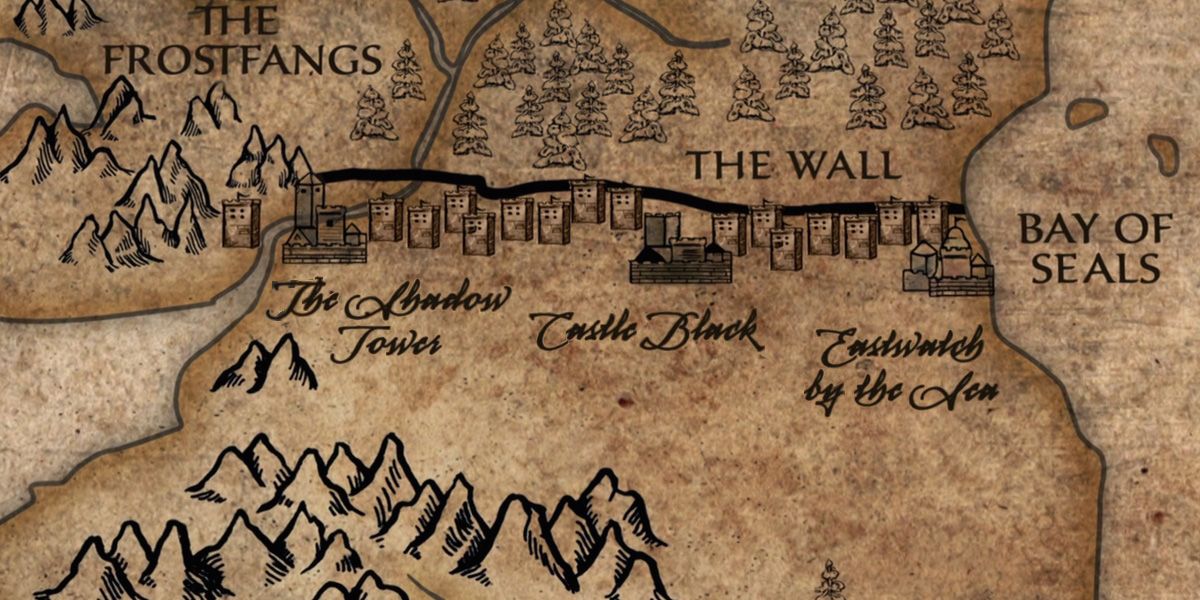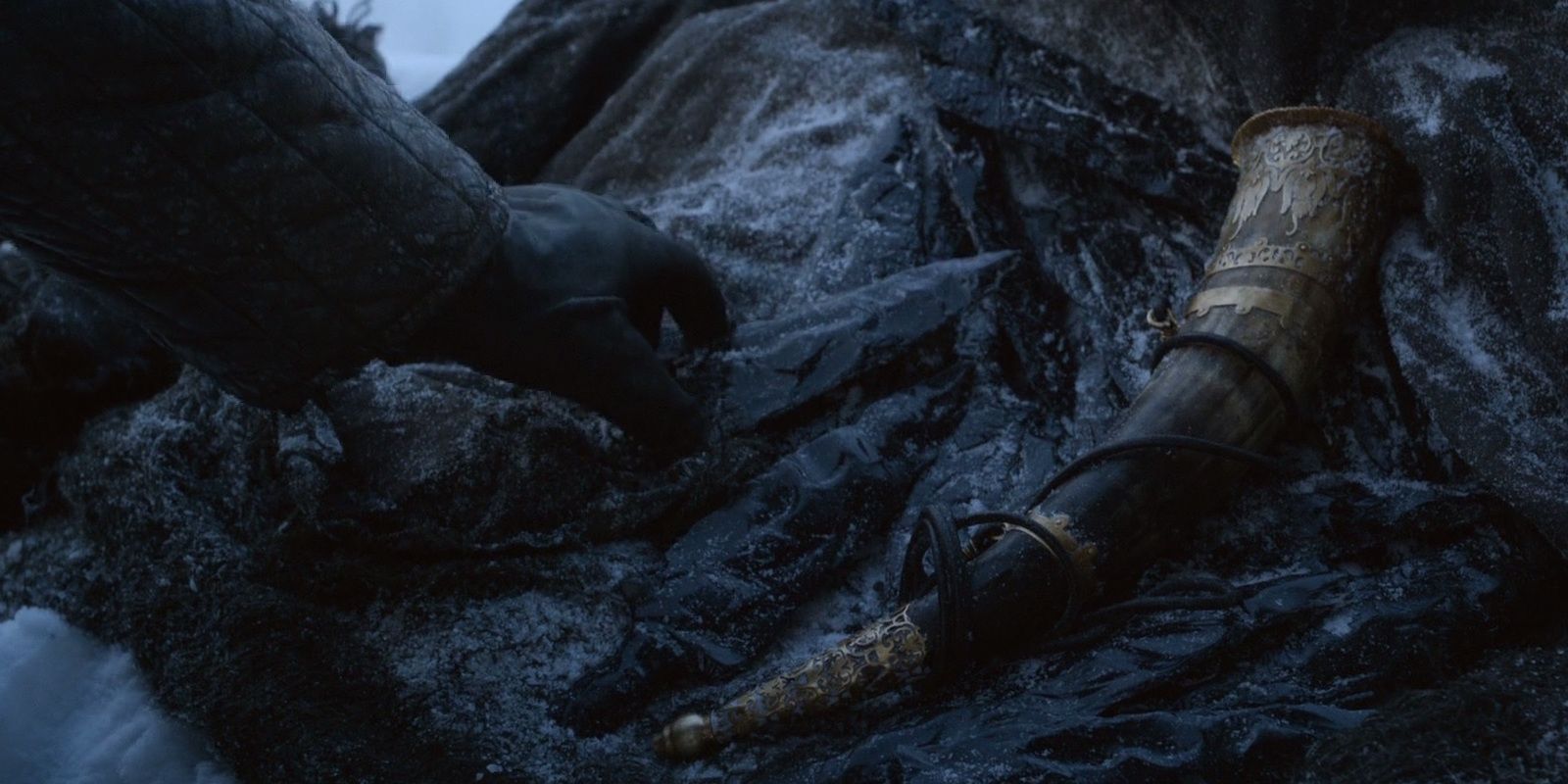The wildlings may live simply, but they’re one complex bunch. When we first met them on Game of Thrones, they were seemingly villainous: Osha and her crew threatened a very young and incapacitated Bran, and they were labeled as an enemy of the Night’s Watch (and one of our heroes, Jon Snow).
But as the show (and George R.R. Martin’s A Song of Ice and Fire book series) progressed, so did the narrative surrounding the free folk. When Jon Snow was trying to ingratiate himself while joining their ranks, characters like Tormund Giantsbane and Ygritte showed us sides of their band we hadn’t seen before—and we learned that their goal as a group is the exact same as that of every noble house in Westeros: survival.
Currently, on the show, the remaining pack of free folk have dwindled, and time has shown us that they may be more good than bad, as they are fought alongside Jon Snow against truly vile creatures like white walkers and Ramsey Bolton. And, as the series now nears its end, looking back, the wildlings may be one of the show’s most memorable clans. Even wildlings that only appeared once left an impression: who could ever forget the brave, doomed, fierce Karsi from "Hardhome"? (Why couldn’t you have just killed those stupid child-wights, Karsi?! There was hardly anything to them!) Thus, in celebration of the unforgettable free folk, here are 15 Things You Didn’t Know About the Wildlings.
Tormund Giantsbane could be Lyanna Mormont's father
This is one of those fan theories we badly want to be true, but in all likelihood, it’s probably not. There’s a theory by YouTuber Alt Shift X that makes some interesting connections between Tormund and the Mormonts—specifically to Maege Mormont, the mother of the most no nonsense 11 year-old in the realm, Lyanna.
The theory notes that Tormund is called Husband to Bears, among other things, and Maege was called “She-Bear.” In the books, Tormund talks about how one night, he went off drunk in search of a fierce woman he had once known. He found her, and they apparently had consensual sex. When he woke up the next day, he was all clawed up, and there was a she bear’s pelt on the floor, “and soon free folk were telling tales o’ this bald bear seen in the woods, with the queerest pair o’ cubs…”
While likely not true, it is worth noting that Bear Island is close to the land beyond the Wall, and the Mormont women weren’t known to take husbands: “Mormont women are skinchangers. We turn into bears and find mates in the woods. Everyone knows.” Oof! Well, maybe not everyone.
Dominic West was almost cast as wildling king Mance Rayder
Yep. McNulty was almost the King Beyond the Wall. We’ve seen Dominic West star in period pieces before (300, Centurion) and as an actor of great versatility, he seems to be equally at home playing cops with questionable morals or devious, scheming Spartan politicians, so we don’t think he would have been out of place on Thrones.
But while West was offered the part of Mance Rayder, due to the show’s grueling shooting schedule, he declined the role, because, as he told the Huffington Post, “My problem is, I’ve got four kids, and at the moment, I’m reluctant to be away from home for a long time,” he said, noting that the shoot would have required him to be “in Reykjavik for six months.” The show eventually cast Ciaran Hinds in the role, but it would have been interesting to see what spin West put on the role.
Not all of Westeros fears them
Most living in the realm are completely dismissive of the wildlings, and don’t take them seriously as formidable foes despite the fact that houses in the North have been fighting them for centuries. Most people living in Westeros, noble or not, think of the free folk as barbarians above all else, and scoff at their unsophisticated practices of raiding Northern villages and carrying women off without permission (they may have a point there).
Being separated from the free folk by a mammoth sized wall made of ice makes the wildlings almost an abstract concept, a kind of out of sight, out of mind foe many never actually have had to see or face. Look at how Samwell’s father Randyll spoke of them: as subhuman, “things” that are beneath him and other supposed respectable denizens of the realm. While Randyll Tarly may be a pretty evil dude, his opinions about wildlings are pretty standard south of the Wall.
They are descendants of the First Men
The First Men are just what they sound like: the first folk to settle and live in Westeros. About 12,000 years before the current story began, the First Men came to Westeros and encountered resistance from the Children of the Forest. Eventually, though, the two groups made peace and united to defeat a new enemy: the white walkers.
Later yet, when the Andals invaded Westeros, the First Men largely resisted this invasion by staying far North, relying on the geographical separation provided by the Neck. Thus, the blood of the First Men is most pure North of the Wall, where the Andals never settled or inter-married. In fact, it’s safe to say that the wildlings have more blood of the First Men flowing through their veins than the Starks, because, for centuries, the wolves of the North have married women with blood of the Andals (Ned marrying Catelyn is an example of this). So while they may not be connected to any noble houses, wildlings are connected to the land and its ancestors more than anyone else.
Bran fights a legendary wildling while warging into Summer—and wins
We feel kinda sorry for TV show Bran—he has gotten nowhere near the amount of incredible moments book Bran has—and one moment in particular from Martin’s books shows Bran defeating a wildling warrior. In the ASOIAF series, there’s a legendary wildling warg/skinchanger named Varamyr Sixskins, who used to ride into battle alongside Mance Rayder on a 13-foot snow bear. Varamyr gets the prologue of Martin’s A Dance with Dragons, and at the end of the chapter, he dies, but just before he does, he wargs into his one-eyed wolf.
Later, in Bran’s first POV chapter in the same book, Bran comes across the one-eyed wolf while warged into Summer, and this happens: “Rolling, ripping, kicking, they fought until the both of them were ragged and fresh blood dappled the snows around them. But finally, the old one-eyed wolf lay down and showed his belly. The direwolf snapped at him twice more, sniffed at his butt, then lifted a leg over him.” Bran, still warging, then becomes the pack leader, marking yet another occasion in which Starks lead packs of wildlings.
Connections with other clans
Remember way back in season one where Tyrion and Bronn found themselves trapped by Shagga, son of Dolf, and a bunch of rough looking renegade warriors in the Vale? That would be one of the Vale mountain clans, and they have more than just a wee bit in common with wildlings.
During the Andal invasion, there was a group of First Men still in the Vale who refused to bend the knee to any noble house (sound familiar?). These men then fled into the mountains, where they have lived ever since. Other customs they share with the wildlings include running off with (or straight up stealing) women, raiding homesteads and small villages for food, weapons, and supplies, as well as an unyielding desire to govern and rule themselves. While we haven’t seen Shagga or his crew since season one, we’re pretty sure he and Tormund would either be best friends, or fight until the death—and either scenario would be beyond entertaining to watch.
Wildlings are popular targets for slave traders
Remember how Ser Jorah disgraced himself by selling slaves? He sold them to Tyroshi slavers. Tyrosh is on an island south of Braavos, and Dany spent a brief time there while on the run as a young girl. Book Daario was also a Tyroshi, and they have reputations for being very no nonsense—and for taking whatever, or whomever, they want.
While there are several free cities that are slave cities (or were, since Dany freed most of them), Tyrosh has been known to be the most aggressive when it comes to acquiring slaves. It has been common practice for Tyroshi men to sail over to places like Hardhome and capture bunches of wildlings to take back and be sold as slaves. It is also worth noting that other free cities like Yunkai have enslaved wildlings, as well. Yezzan zo Qaggaz, a wise master of Yunkai, was said to have a collection of slaves that included a giant, showing that not all free folk were truly free, after all.
They were once ruled by twin kings - and one may have been trapped under the Wall forever
3,000 years prior to when the story began, there were once two twin kings of the wildlings, Gendel and Gorne, who apparently were the anti-Baratheons and ruled together. The brothers led one of the seven free folk invasions of the North. They were stealthy in their methods, passing beneath the Wall without being spotted. They eventually met the Starks in battle, and Gorne slew a Stark king before getting killed by the king’s heir.
When the Night’s Watch heard of the battle, they rode south to help the Stark army, driving Gendel and his remaining forces back North. Legends say that on their way back North, while using secret caves and tunnels underneath the Wall, Gendel may have escaped, but was likely trapped beneath it, as neither he nor the remainder of his army was ever seen or heard from again. Some believe his ghost is still under the Wall somewhere.
Pretty much everything we know about them comes from one source
The fact is that the written accounts of the men of the Night's Watch make up the vast majority of what Westeros knows about the free folk. Which makes sense, especially considering that wildlings aren’t exactly the type to record their own histories, yet men of the Night’s Watch (particularly rangers and maesters) are. According to The World of Ice and Fire, the Night’s Watch has been the best—and primary—source of information about wildlings for centuries.
Yet they may not be a reliable source. Take this excerpt from The World of Ice and Fire: “Reliable accounts from the rangers of the Night’s Watch, who were the last men to see the giants while they still lived, state that they were covered in a thick fur rather than simply being very large men as the nursery tales hold.”
Martin seems to be commenting on the inadequacies of human memory and recorded history, and the book also notes that the men of the Night’s Watch pretty much know nothing, Jon Snow: “Few rangers have penetrated more than half a hundred leagues into the haunted forest, and doubtless there are more kinds of wildlings than even they can imagine.” So while men in the Watch have certainly recorded wildling history, it is most certainly a limited history.
Most wildlings worship the Old Gods, but not all of them
Because there are so many diverse factions of wildlings out there (more on this in a minute) it’s logical that not every single clan worships the same batch. While the great majority of wildlings are old school and worship the Old Gods, a few groups do not.
Wildlings who live in the twisting, arctic-like valleys of the Frostfangs (like the Thenns) are said to worship the frozen, dark gods beneath the ground there. Another faction is said to worship the crab gods at Storrold’s Point (Hardhome is at the very tip of Storrold’s Point), while yet another group worships the gods of ice and snow on the Frozen Shore. Just as those in the seven kingdoms worship a wide range of gods, so do the wildlings, who have more in common with the folks in Westeros than they’d ever acknowledge.
They have a pretty insane history with House Stark
In addition to joining the Night’s Watch to fend off several full-on wildling invasions (such as the aforementioned attempt by Gendel and Gorne), the Starks have been battling the free folk for centuries. But their history goes much deeper than battles.
There was Bael the Bard, a King Beyond the Wall who infiltrated Winterfell disguised as a singer. Bael disappeared with Lord Brandon Stark’s maiden daughter, and no one saw or heard from either of them until one day, when she returned with an infant. In a move straight out of a Greek drama, this Stark-wildling offspring apparently later slew his father in battle, not knowing who he was. The Stark bastard, who was Lord of Winterfell at that time, brought Bael’s head back to Winterfell, and when his mother saw and recognized it, she threw herself from the castle’s highest tower.
There was also another time in which a Stark and a King Beyond the Wall (NOT Jon Snow and Mance Rayder) united to defeat a common enemy—which we’ll get into in much more detail in entry #3.
There are way more branches of them than you realize
Sure, you’ve seen the cannibalistic Thenns, and you’ve seen giants, who, along with the Children of the Forest, were the North’s first dwellers, even before the First Men. While both Jon Snow and Mance Rayder note multiple times in the books that there are at least 90 different groups of wildlings North of the Wall, as The World of Ice and Fire notes, there are actually “countless tribes and clans of the free folk.”
A great many have gone undocumented, but several well known clans include the perpetually shoeless Hornfoots, the cave-dwellers, who tend to have filed teeth; a few small communities of Frozen Shore tribes (Karsi was likely from a Frozen Shore tribe), whose preferred mode of travel are chariots made of walrus bones; the ice river clans, who are also cannibals; along with several groups living in the Haunted Forest alone, including the White Tree community. While many of these groups have been at odds with each other, they all united under Mance in the interest of survival.
A King Beyond the Wall worked with a Stark to take down the Night’s King and his corpse bride
According to ASOIAF legend, the 13th Lord Commander of the Night’s Watch fell in love with a female white walker, married her, and took her back to Castle Black. The Lord Commander thereafter referred to himself as The Night’s King (not to be confused with the Night King currently leading the white walkers on the show; George R.R. Martin has suggested they are separate beings) and began a tyrannical rule at Castle Black complete with human sacrifice (think Craster giving his sons to the Others).
The Night’s King and Queen ruled for years until Joramun, the first King Beyond the Wall, teamed up with the Starks, then led by Brandon the Breaker, and together, the wildlings and Starks removed the Night’s King, presumably killing him and his queen.
This happened during the Age of Heroes, a time when myths and legends serve as historical records, so we’re never sure exactly what went down, but if it’s even half true, it shows that the Starks and the wildlings have had to unite to save mankind before.
Wun Wun was named after a former NFL Quarterback
Those who frequent George R.R. Martin’s blog know that he is a huge New York Giants fan. So much so, that he has named a fan favorite character after one of his all time favorite football players—and he was pretty literal about it. He named a giant after a Giant: Wun Wun, who died with a million arrows in him at the end of “Battle of the Bastards,” was named after former Giants quarterback Phil Simms.
The giant’s name is in reference to Simms' jersey number, 11, (get it? One-one = Wun Wun). Martin spoke in an interview about how he also had Wun Wun literally tear apart a man who wore a sigil featuring a five-pointed silver star on a white field. This five-pointed silver star represented the Giants’ longtime divisional rivals, the Dallas Cowboys. Savage.
Wildlings believe in the power of the Horn of Winter
The first King Beyond the Wall Joramun was said to have a weapon that could change everything: a horn that could bring the Wall down when it was played. Also called the Horn of Joramun, the Horn of Winter was assumed to have been laden with some sort of magic—and since there was magic involved in raising the Wall, it’s entirely feasible that there could be magic involved in bringing it down.
In the books, Mance threatens Jon Snow, claiming he has the horn and that he’ll blow it if the Watch refuses to let the wildlings pass. But he was bluffing, and was actually rocking a fake horn. There’s also the possibility that Jon Snow himself has found the horn while at the Fist of the First Men when he finds the dragonglass daggers. He later gives the horn to Sam, who takes it to Oldtown. On the show, in a blink-and-miss-it moment, it’s Sam who finds an odd looking horn mixed in with the dragonglass. It hasn’t played a role yet, but it just might. At present, in the books, no one is completely sure where the Horn of Winter is…
--
Did we miss any pertinent info about the wildlings? Let us know in the comments!

